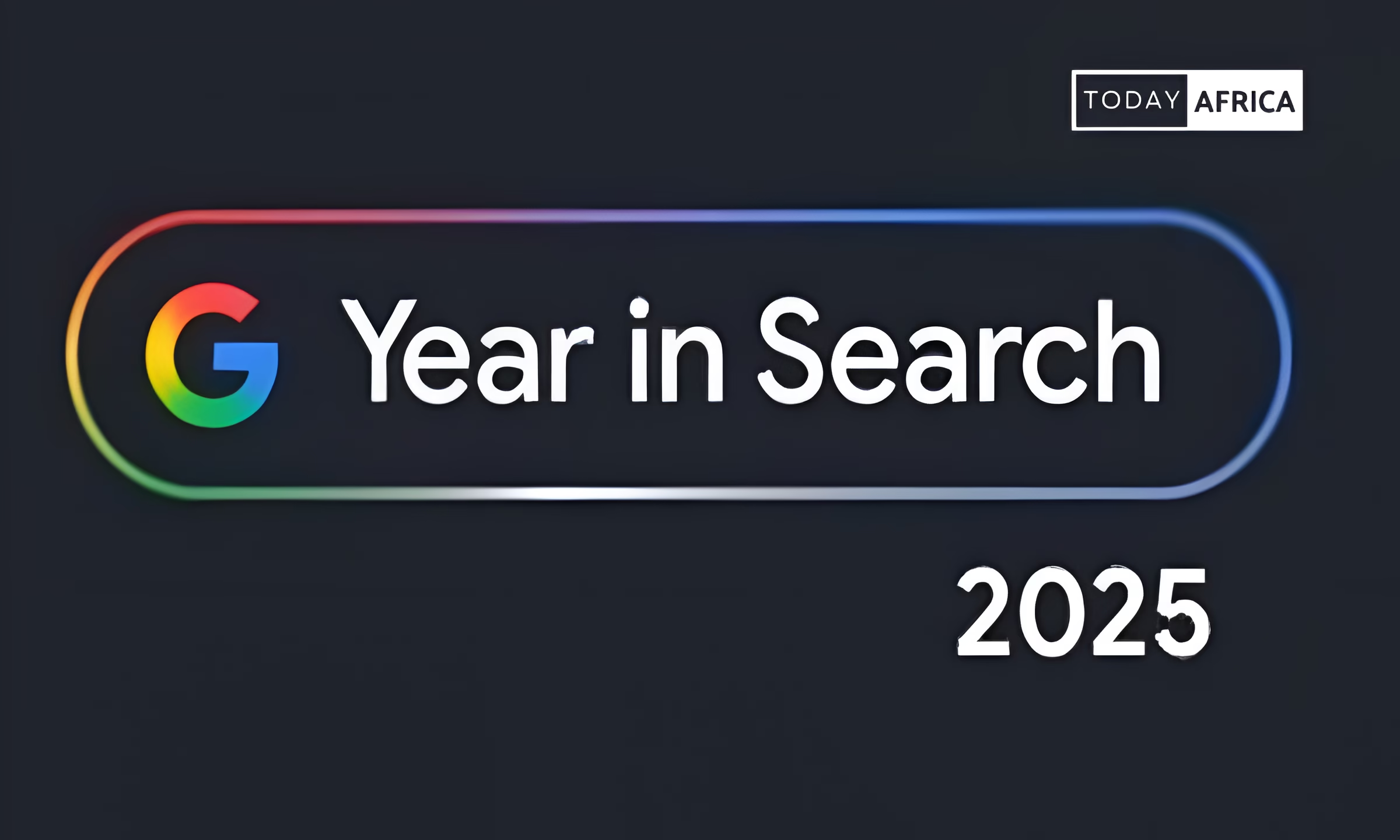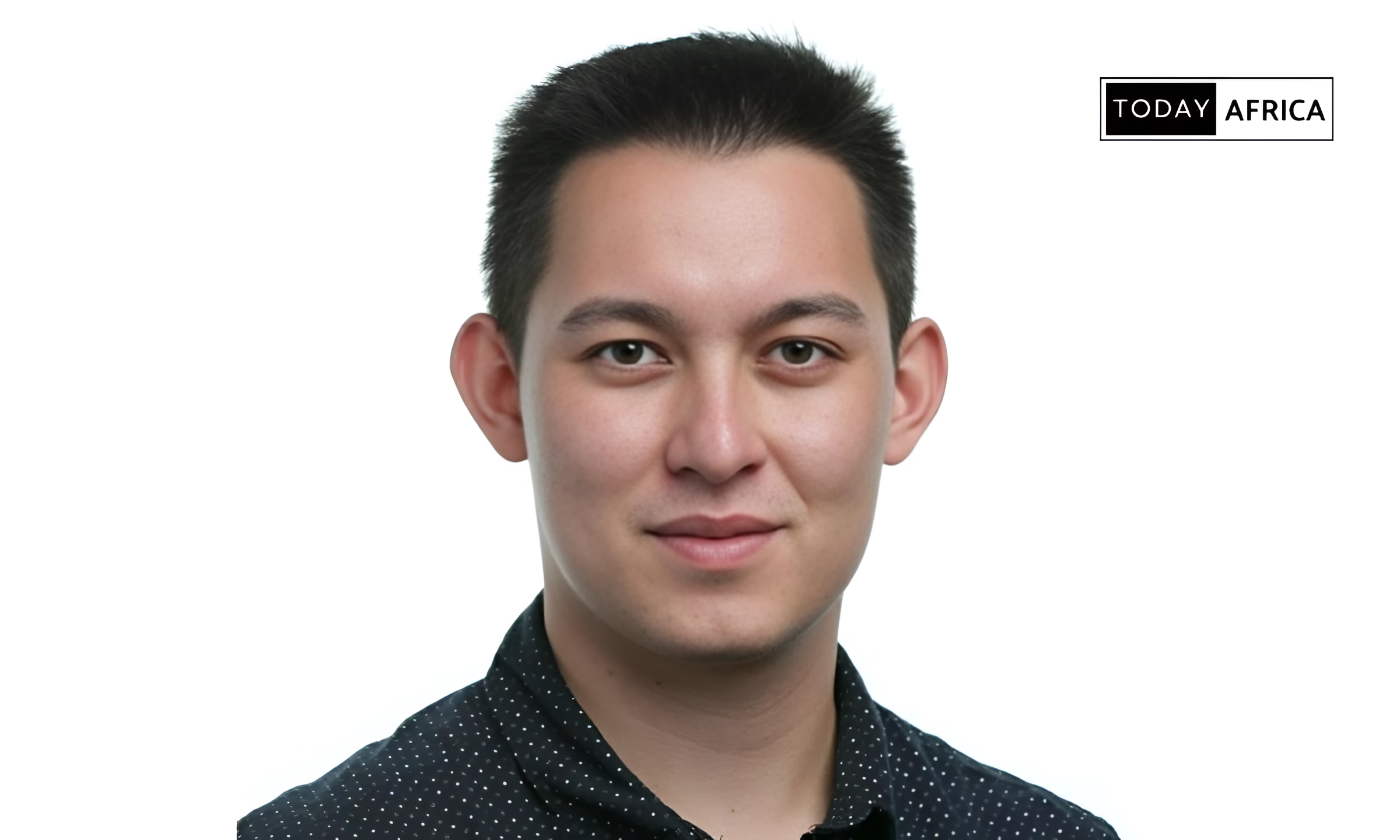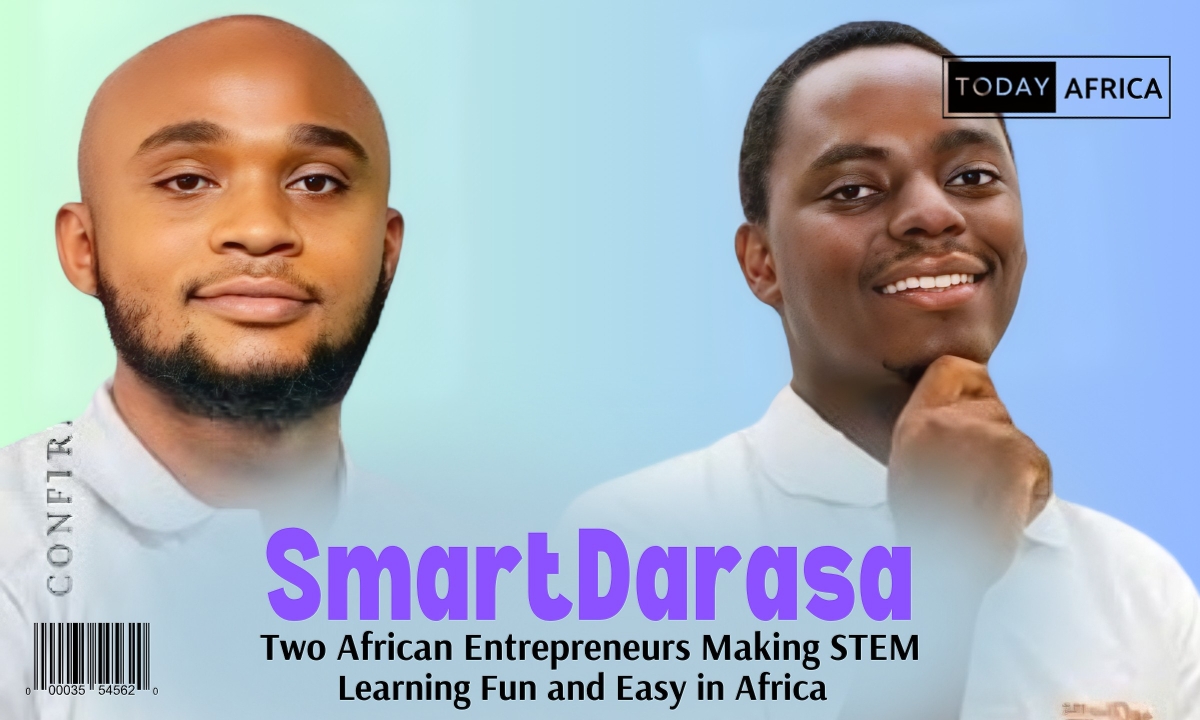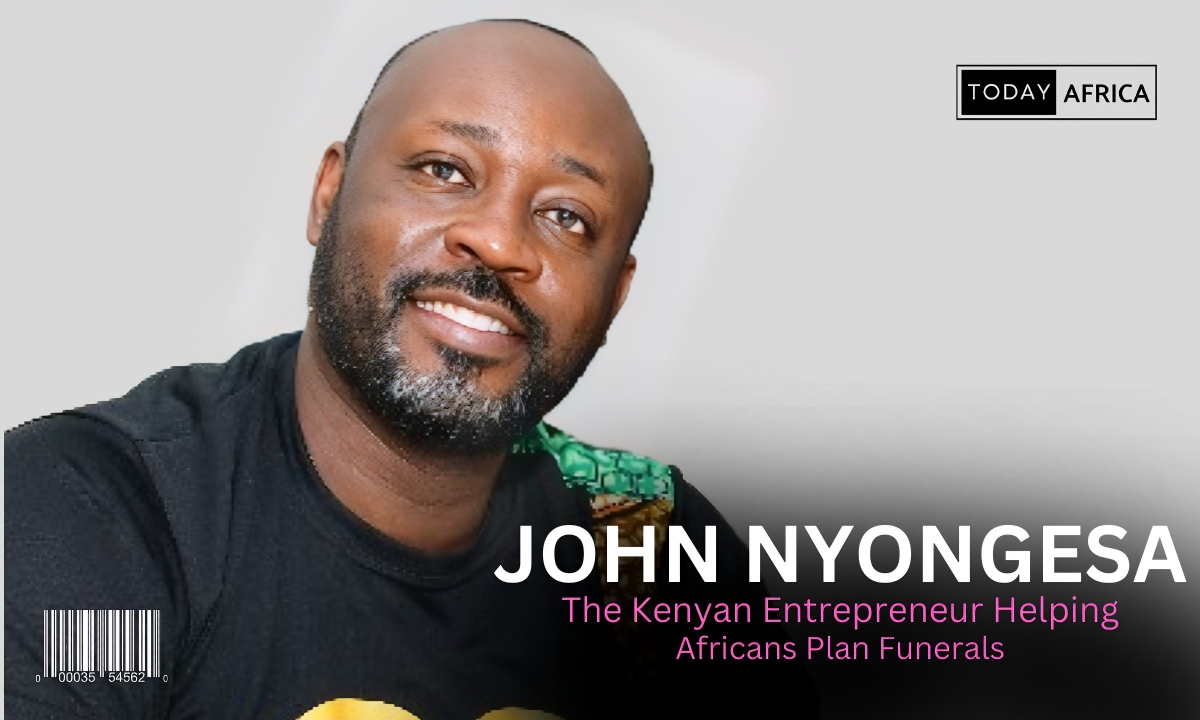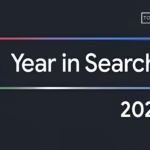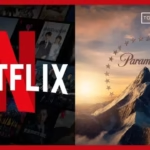Oluwatobi Akinola is the co-founder of Monietab (formerly Stashwise), a gamified savings and investment app designed to make saving money fun and engaging for Africans.
He is also a creative product designer, passionate about building products that enhance everyday life for millions, with years of experience creating impactful and user-centric digital solutions.
Oluwatobi Akinola shared with Today Africa about his entrepreneurial journey.
Tell us more about yourself
My name is Oluwatobi Akinola. I’m a graduate of the Federal University of Technology, Akure, FUTA, Information Systems graduate actually. I’m also a product designer.
For the last couple of years, I’ve been doing product design for a number of fintech companies in Nigeria. So that’s me.
Stashwise is not my first try out of business. I’ve done a business before called Coty Venture. It was to help farmers to aggregate information that can help them make more informed decisions.
But that was like when I was still in undergraduate, we shut it down, I think a year after, that’s everything about me.
What really inspired you into starting Stashwise?
There’s a funny story behind it. So I have a friend who normally, when you have that kind of friend, every time you are around them, they complain a lot about not having money.
There is no time they are not broke or something. But you also know that this friend is a chronic gambler. Like there is no weekend you will see him at one betting shop or the other.
He’s like a chronic gambler in the sense that there was a time I had to go and help him bail out his phone. There is this virtual game they normally play at all these betting centres.
He has bet that he has paid all the money with him and also used his phone as a collateral to play more games with hope that he’s going to win and collect his phone back. So I have to go and bail out his phone for like 25,000 Naira.
That was where the whole idea for us came from initially. To build a platform that will make something that has you playing the game, but instead of like you gambling in a sense, what you are doing is saving money.
So that was where the first conversation came in between me and my co-founder.
But one of the things we realized as we started building is that betting is a psychological thing too. To a large part of it, it’s a psychological thing. It’s not something you can really solve by building an application for.
You might reduce it to some extent, but I don’t think you can really solve it. That’s one of the things we realized when we started building.
So we have to pivot it a little bit to a saving platform, but add some element of gaming to it to attract those who are gamblers, and are trying to quit. At the same time, attract those who just want to save money. That was where the idea came from.
That was where the inspiration came from. But over time too, another problem we have been trying to solve is helping cooperatives. I don’t know if you know, but it’s like more than 30,000 cooperative organizations in Nigeria.
And one of the things about those cooperative organizations is that most of their finances are managed manually. So they take savings from their members and they also give out loans to their members.
If you are a member of a cooperative, you can request a loan from them. But most of all the things they do that relate to money, they still manage it manually. Like the most advanced cooperatives I’ve seen, still use Excel.
Another thing we are trying to solve now is cooperative organizations to try and digitalize their finances so that their members can be able to save or request for loans directly from our own platform, while the cooperative manages the rest of the thing from their side.
Could you please tell us more about Stashwise and the gap you are trying to bridge in the market?
To put it simply, Stashwise is a gamified saving platform. And what does gamified saving platform mean? It means Stashwise is a saving platform with some gamified elements in it.
I’ve talked about my friend’s issue. One of the things we also realized is that people tend to find it difficult or struggle to save consistently.

There’s a statistics that I read from the CBN that says that 71% of Nigerian adults struggle to save consistently. Not that they don’t want to save money, but they struggle to be consistent with it.
For example, at the beginning of every new year, people will have a New Year’s resolution that they will be saving money and stuff like that. But two months down the line, they will find one excuse or the other to remove that money from there.
And one of the things that we realized is the problem is lack of motivation. When the initial adrenaline rush comes to you; ‘I want to be saving money, maybe you’re listening to a motivational speaker or whoever, it gives you that motivation that I want to be saving.’
But that motivation gets going down as days go on. And along the line, the saving of money becomes like an obligation, not something you are excited to do, something bitter. So one way or the other, you find a way to remove your money and stop saving.
One of the things you want to try to do or to help people is to make them stay consistent with motivation. And that was where the gamification element comes in. Whenever you save on Stashwise, there is an in-app currency that will give you, which is Stashcoin.
When you save money on Stashcoin, depending on how much you save, and every time you save, we give you some Stashcoin. Now you can accumulate more of that Stashcoin, to redeem some rewards like vouchers, gadgets, and accessories.
The assumption is if you keep saving, you will get this thing called Stashcoin, and you can use that Stashcoin to get some reward. This can give you some motivation to keep saving your money.
When you know that you are still going to get the money back with an interest. So that was where the idea of Stashwise with gamification in savings comes in. And that’s what stashwise is.
Read Also: She is a Finance Graduate, Now Building a Healthtech Startup – Onkgopotse Khumalo
Are there any other services that you offer?
Currently, no. The next service we want to add to it is what I just talked about, is the cooperative. Whereby a user can be able to join a cooperative and save with them.
What were the challenges that you faced in the beginning and how did you people overcome them?
I guess all founders in Nigeria will have experienced these challenges one way or the other, which is limited resources. When you are building a business in Nigeria, you can’t really go and meet investors with just an idea unless you have some form of connection.
At the start of Stashwise, limited resources was one of the challenges we faced. And that limited resources also brings some other issues like hiring. So because we don’t have a lot to offer to a developer, we kind of get the not-so-skilled version of people working with us.
It was stressful at the beginning. So those are some of the challenges we experienced. Well, I’m going to say, thankfully I have an amazing co-founder. She’s a technical person and she always comes around somehow to find a way to sort out issues.
That was how we navigate that path, right? But limited resources was one of the biggest challenges that we have starting out.
Then another challenge that we have was trust. Anything that relates to money, Nigerians, it’s not so easy to get that trust. So that was one of our biggest challenges. To get people to start using the platform, they have to ask a lot of questions.
We had someone who tried the platform by saving money, then tried to remove it the same day and do that thing for like four or five times. I reached out saying like, I realized you’re trying this transaction, what happened?
And he said that, I’m just trying to make sure it’s something I can trust. Like I know that I can collect my money back whenever I So trust was one of the things and I think gradually as we progress we are gaining more trust of the people.
How did you people build trust?
Largely, I would say the way we build trust is through customer care. We reach out a lot to people.
So if you register on the platform, and we notice that you tried to do something, maybe it wasn’t successful, or you didn’t follow through with it, we will reach out to you to ask, okay, what is going on? What was the issue? What are you trying to do that did not work?
There are some people that reach out to us before they even register on the platform to ask a lot of questions.
I guess because of the fact that we are there every time they come around to ask questions or to make an inquiry or us even reaching out to them, kind of give them that confidence to still proceed with the platform. That was one of the ways I would say we built trust.
Then another way we built trust was when we integrated VFD, a microfinance bank. We didn’t have any partnership with them before. We saw changes in people’s behavior to save it with us when we announced the partnership with them.
Read Also: “If Mercy Does Not Post it, I Know This News is Not True” – Mercy Obidake, CEO of MO Media
How did you raise capital for your business?
Currently, we are currently bootstrapping. We haven’t raised any funds for the business. Like I said initially, because of the environment that we are in when compared to the other continent and how they raise funds.
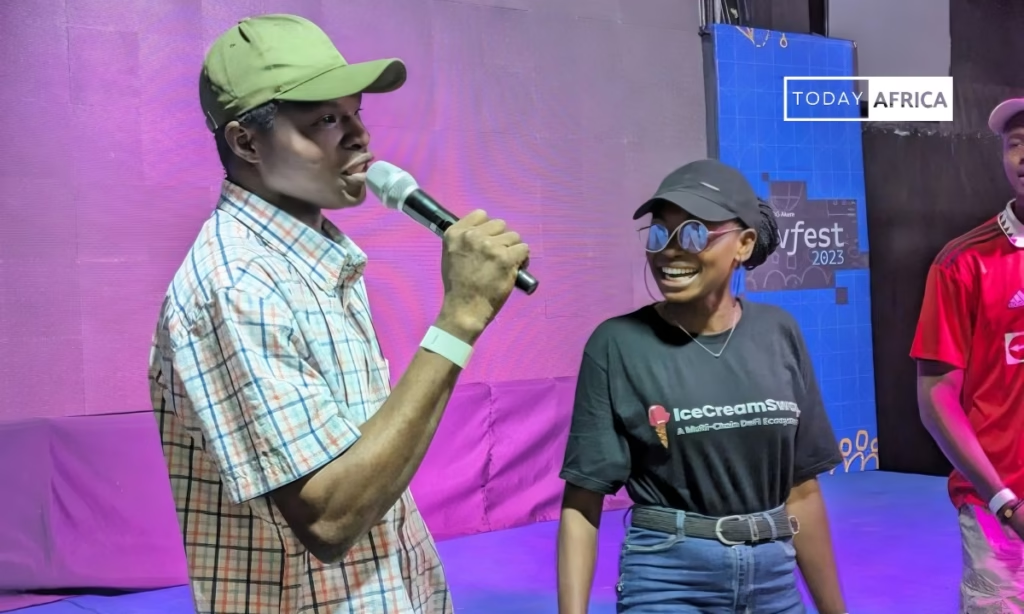
You can’t just tell any investor, oh, I have this brilliant idea and I think it’s going to work out. Give me your money, let me go and build it. Nobody is going to listen to you.
Because of that, we are currently bootstrapping, but my co-founder and I put some money in it to be able to pay some of the developers, to be able to afford some of the other things that we use. But we will soon be announcing a fundraising very soon, sure.
What’s your business model like and how do you generate revenue for the business?
Generally for a saving platform or a saving company, there are two major ways or two known ways that you generate revenue.
The first one is you put the users’ savings into an investment. And the interest spread, interest spread means the differences in the interest. It’s what you get as your own revenue.
Another way is like you take the user’s savings and use it to fund loans. So that would be like for other saving platforms that have a loan product where you can borrow money from them.
You need to fund loans to get higher interest and the defenses in it will be your revenue. For Stashwise is currently the only way we make money is from interest spread.
So we take the user’s savings and we invest them in some investment vehicles that give us a return that will be able for us to fulfill the interest that we promised the user and also be able to keep some for ourselves.
Currently, some of the investments that we put money into, at least are giving us a return of a minimum of, like the difference is now I’m talking about, from 10 to 25 percent. That’s after paying the user’s money.
Then another way we intend to generate revenue moving forward is through cooperatives. We are currently working on the platform. haven’t put it out publicly for people to start using.
But one of the ways we want to generate revenue from that is a base fee. We want to be giving each competitive organization that onboards with us a certain amount of money they’ll be paying every month to be able to keep using the platform.
And then also charge them a transaction fee on any non-saving product. So anything from loan repayment to sitting allowance and all these other forms of money that cooperatives usually collect from their members, we will be charging some percent on it.
Since you people launched, what has worked in attracting and retaining customers on the platform?
What has worked is really social media posting and WhatsApp broadcasting. We do tons of sharing our stuff on WhatsApp. Personally, I joined a ton of WhatsApp groups that I repost our stuff on because we haven’t done much paid marketing.
Mostly it’s just us and the team members sharing stuff on WhatsApp status, WhatsApp groups, and also on our social media. If you check all our various social media platforms, there is always one content or the other every day.
Those are the ways we are currently attracting users. But we also intend to do more in terms of paid marketing to also attract more users.
Are you not thinking about those who are not on the internet?
Well, maybe in the near future we are going to target them but currently no. Because for you to be an ideal target customer, you need to at least be using the internet because that’s the only way you can be able to save money.
Also you need to at least have a bank account that you can at least transfer money on or have a card attached to it that you can link to Stashwise. So currently we are not targeting anyone who is not at least a big tech savvy.
But I know there are some saving platforms that use agents. So maybe if Stashwise wants to target them, maybe we’ll try that too.
Read Also: We Have Provided 7,000 Women with Our Birth Kits – Kobusingye Mackline
How has the Nigeria economy affected or impacted Stashwise?
Maybe because we just started. So it’s a large extent the economy has not really affected us. But if I’m going to say maybe some ways that it has affected because of the buying power of people has reduced.
I’ll be honest, the money people put in savings will also generally reduce. Let’s say someone is earning 70K a month and if you are going to factor in all the expenses he or she is going to make before the end of another month.
The amount he’s going to save might not be upwards compared to when the economy was great. So I would say maybe that’s one of the ways.
Then another one was when, at the beginning of the year or so, the federal government reduced the interest on federal government bonds. And usually, as a saving platform, the interest you promise your users are usually benchmarked on federal government investment instruments like treasury bills and bonds.
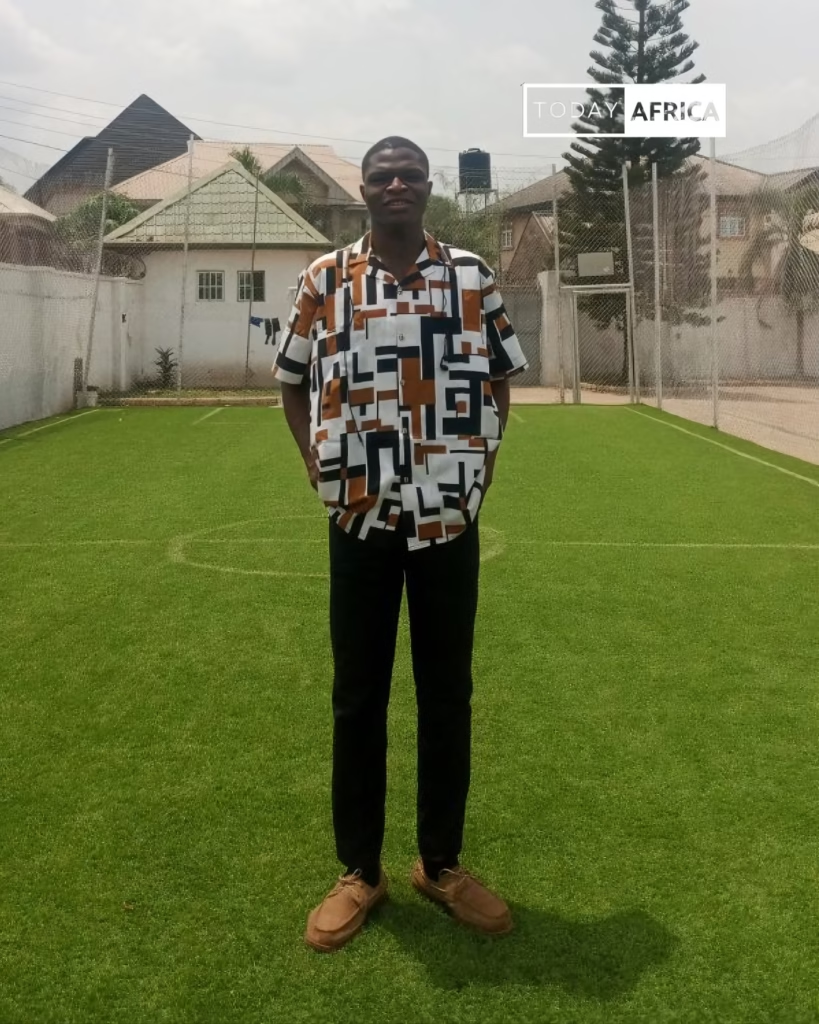
So when that happens, it also affects where the kind of interest you promise the users. We are thinking of promising them something of 20%. But also like if we go over promise and under deliver, it’s going to be a problem. So those are the ways the economy has affected the decisions that we make.
How is Stashwise doing today and what does the future look like?
We just put out our mobile application and the responses we are getting from that are positive since we put it out. We’ve had a decent amount of users and a decent amount in assets under management.
But looking up to the future, you know, if you are going to talk about savings in Nigeria. And if I ask you about savings in Nigeria, there are two major brands that will come up in your mind.
But one of the futures I’m hoping for Stashwise is that when we talk about savings in Nigeria, Stashwise will be one of the names that will come up in your mind of any Nigerian.
How has AI impacted or helped in the running of Stashwise and how do you plan to stay ahead?
That is actually a funny question. But currently, we are not integrating AI or whatever AI with what we are building. But we intend to in the near future because AI can help you greatly.
What I believe we are building with Stashwise, to even mention, is not just a savings platform, it’s a financial assistant.
Something that I hope you know just for saving, because one of the other things that I didn’t mention before was, part of the things we are integrating into Stashwise is financial education.
Another thing we realized Nigerians don’t have is financial education. If you ask an average Nigerian, what is stock market? They don’t know what it is. Just try it out, like go to the market or go anywhere.
Even students can surprise you that they don’t know what it is. So if someone cannot know something about the stock market, how would they even know some of the investment terminologies, compound interest, simple interest, and others.
One of the things we are getting into Stashwise is financial education. So the way I usually think of Stashwise is not really a savings platform, but a financial assistance that helps you with your savings, help you with the literacy part of your savings, and help you with other things.
One of the ways we might, or we think we might integrate AI in the near future is going to be assistance relating to financial knowledge. So you want to analyze your banking, financial statements to know, where are you spending money on or where do you need to improve to be able to save more money?
You just come across a bank financial terminology, you don’t know what it means, want to know more about it. Those kinds of things will be the way we are going to integrate AI in the next future. But not currently.
What are the key lessons that I’ve learned in your journey as an entrepreneur?
I would say one major one is progress is better than perfection. Make progress. Don’t wait till everything is perfect. To give you an example of that, the first MVP of Stashwise that we put out was attached to Paystack.
On Paystack you can create a payment page where people can see the amount and pay the money. Also you can also create a subscription page.
A subscription page on PayStack is where if someone decides the amount they want to put, they put their details, they also decide the frequency, maybe daily, bi-weekly, weekly, or monthly.
If they set all those things and they proceed with it. So every time, based on what they said, money will be removed from their card that they use on that subscription page.
The first MVP we put out of Stashwise was just a landing page and a button that says, get started. When you click on that button, it takes you to Paystack’s subscription page. Where you have to put all those details.
When we put it out, a lot of people are just messaging me; why is it not like they can sign up, log in and do all these random things that people would do and why is it taking them to Paystack immediately.
But at least it gives us some experiences, some knowledge from that. Even two people, I think, signed up through that first subscription page. I think sometimes as founders or as entrepreneurs, you might want to think, oh, I want to build out this thing first.
Like we said, we want to be the gamifying savings platform. Why would we be putting out a Paystack subscription page? But at the same time, it’s still progress to some extent. So I think progress is better than perfection. So that’s one of the lessons I’ve learned.
Read Also: Helping Students & Entrepreneurs Sell Online More Efficiently – Edgar Odey
Is Stashwise registered with the SEC and other authorized bodies?
For a saving platform for you to be compliant, there’s two ways you can do it.
The first one is to get a SEC license like you mentioned. And unfortunately for us, we haven’t got it to the point and the required capital to be able to get the license.
We don’t have that fund, just like I said before. We haven’t raised any money. So the next best option that we can go through is to partner with a microfinance bank. And that’s what we did with VFD.
So hopefully moving forward, when we raise one fund, we will go on and get the license just for ourselves.
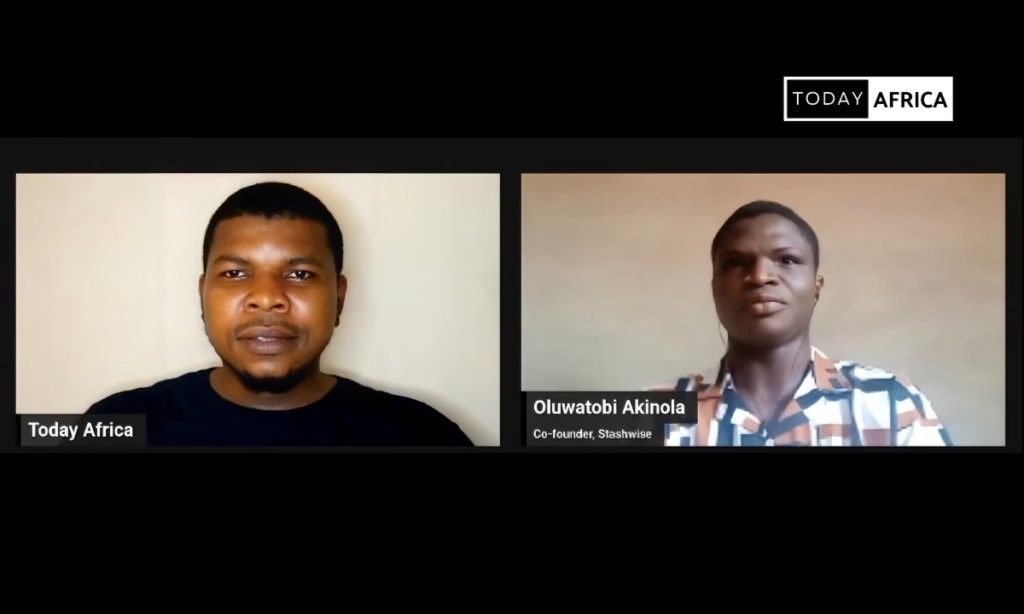
What advice would you give to others who are starting their business?
I would say start where you are and start with what you have. Don’t waste a lot of time trying to get people on board, maybe to invest like I have to get people to give me money before I start with. So start where you are and start with what you can.
And if there is one advice I’m going to give. I know lawyers can be expensive, but try as much as possible to get the lawyer’s advice before you sign any agreement. This is from experience, I’m saying this.
Don’t use just AI to interpret an agreement. As much as you can, even if it’s like a lawyer friend that is not out of school yet, or I don’t know how you are going to do it, but try as much as possible to get the lawyer before you sign any form of agreement.
So that would be the advice I would give.
Contact or follow Oluwatobi Akinola:
Leave a comment and follow us on social media for more tips:
- Facebook: Today Africa
- Instagram: Today Africa
- Twitter: Today Africa
- LinkedIn: Today Africa
- YouTube: Today Africa Studio


